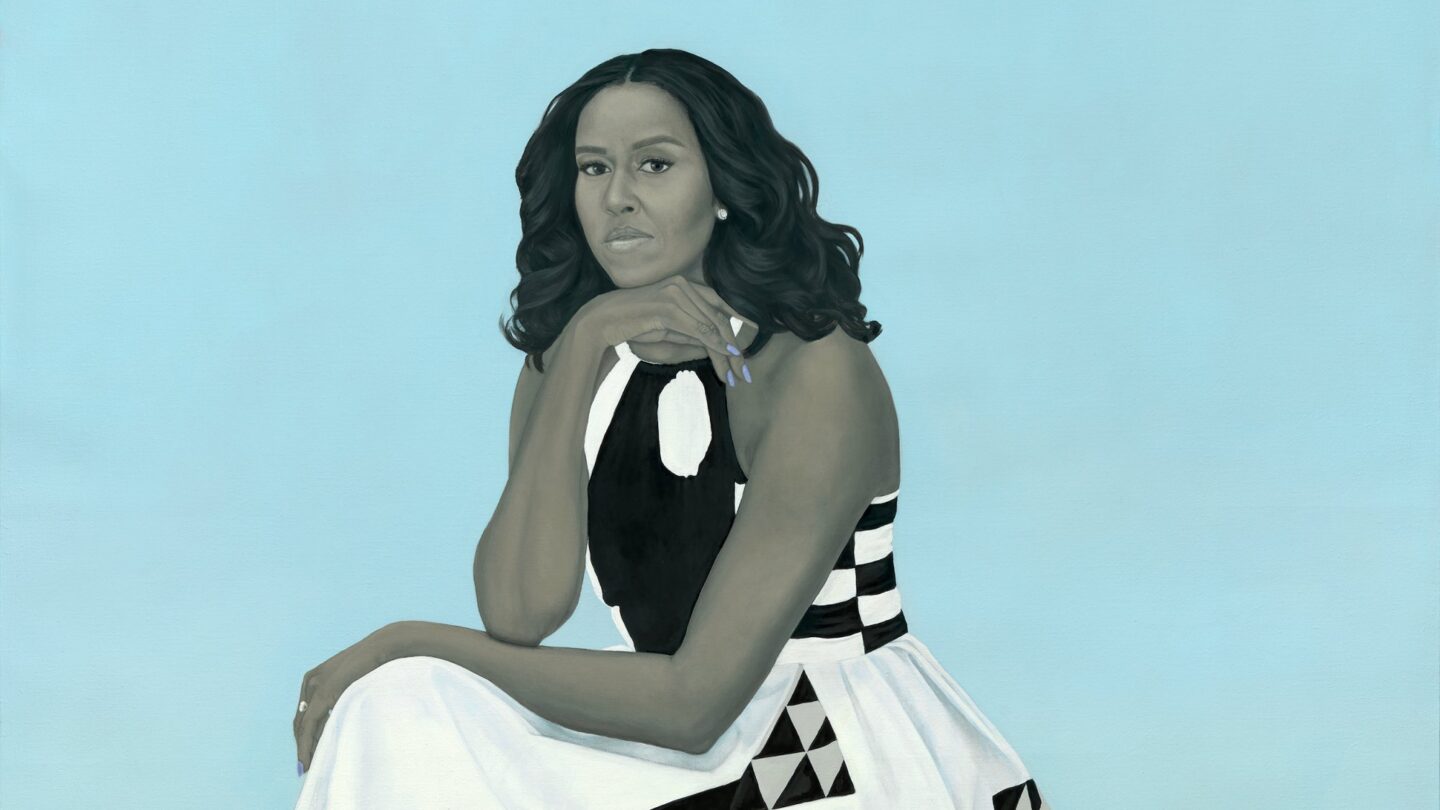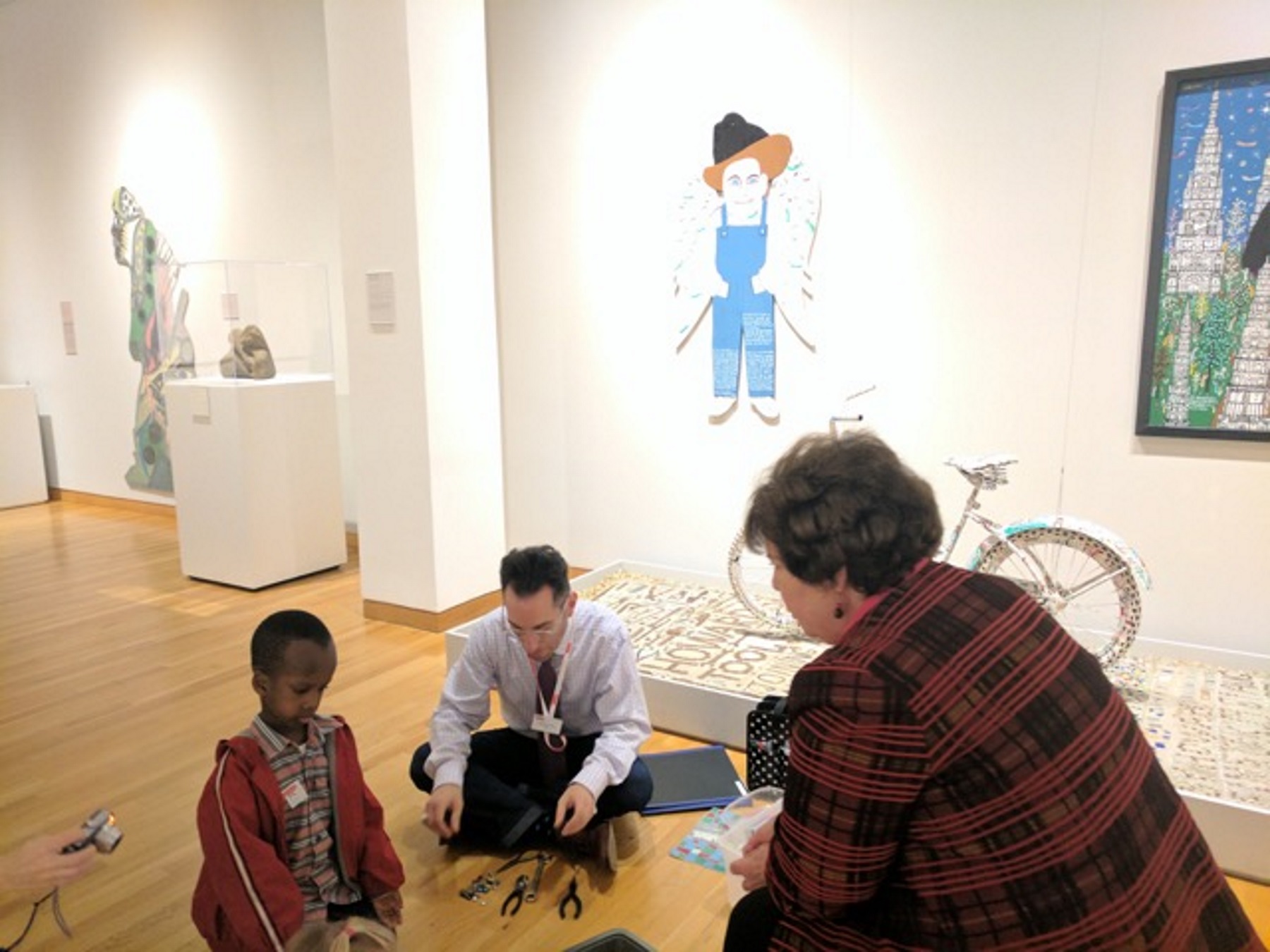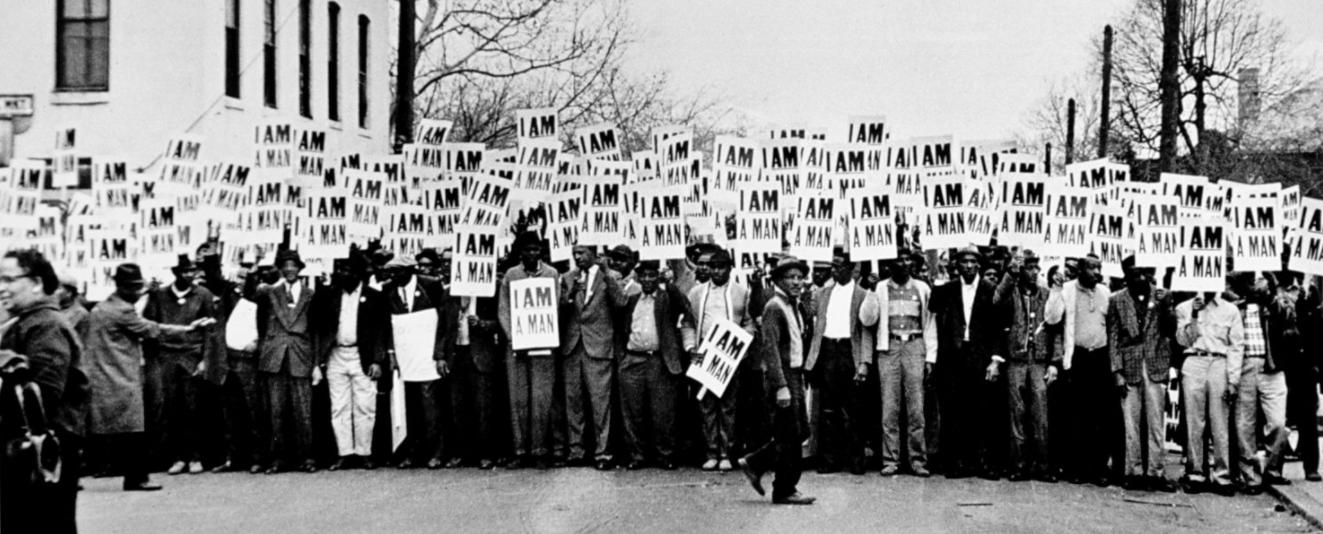The official portraits of former President Barack Obama and former First Lady Michelle Obama that permanently hang in the Smithsonian’s National Portrait Gallery have been traveling across the United States. The exclusive host for the works in the Southeastern region of the U.S. is Atlanta’s own High Museum, showcasing the portraits in a special exhibition on view through March 20. Artist Amy Sherald, a graduate of Clark Atlanta University, painted the iconic portrait of First Lady Michelle Obama. She joined “City Lights” host Lois Reitzes via Zoom to share her perspective on this powerful representation, unlike any White House portraiture to come before.
Interview highlights:
The distinctive style of French “grisaille” used in Sherald’s striking portrait:
“I would, once I finished painting the complexion in gray, or the modeling gray, or rendering it in that ‘grisaille’ tone, I would come back with washes of brown,” said Sherald. “I realized that first off, I really just loved the aesthetic of it. I loved the way that the canvas, the colors were very bright, and this gray skin just really, I don’t know, I just thought it looked great. I think that’s what most artists when they’re creating, they’re thinking about what looks good, and not exactly what things mean at the moment.”
“Eventually, I realized that in hindsight, I was trying to search for a way to represent these Black figures that I paint in a way that the conversation around the work wouldn’t be marginal. I wanted these portraits to exist in our history in a way that was universal,” Sherald said.
“Over time, I started to connect my desire to use that skin tone with … looking at the very few pictures that my mother had of her mother, of her father, of his mother. And those photographs are in black and white, and there’s something about them that modern-day photography, it just doesn’t capture the human spirit … in the same way that you see images of people in daguerreotypes and photography back in the 19th century, in this very dignified way that we were able to finally represent ourselves after the invention of the camera.”
On Mrs. Obama’s flowing, geometric-pattern dress:
“Immediately when I’d seen it the first time, I thought of the Gee’s Bend quilters and Gee’s Bend, Alabama, because those patterns were very familiar to me because of that,” said Sherald. “But they were also familiar to me because of studying European art history at Spelman College with Dr. Arturo Lindsay. So it was a way to, one, connect her to the black American narrative without being didactic, and ground her in that history, but also, it was a nod to European painting, those same shapes we’re also seeing in the work of Piet Mondrian, for example.”
“The way that I cropped it, with it flowing off of the canvas, I think was something that I did so that it would feel like she was sitting on top of a mountain, create this pyramid of sorts — a pinnacle. And she’s surrounded by this blue color that creates space around her, and air, so that there’s movement in the painting.”
A reparative gesture in the exclusionary history of American art:
“Every painting that I make … I don’t take for granted that, being a Black woman who is an American painter and also a figurative painter, that every painting that I make is making up for lost time,” said Sherald. “If you think about art history … and you realize that the first exhibition for African-American artists happened in the 1930s and ’40s, then you can understand and put the portrait in context and a deeper context of what the figure represents within our history because there’s been an absence of that narrative for centuries.”
“I received cards from high school students, from elementary school students from all over the United States in anticipation of seeing the work, expressing their interest and their delight in seeing someone that looked like me, that was a painter that was painting a painting of someone who looked like them.”
More information on visiting the High Museum’s special exhibition of the Obama portraits, on view through March 20, can be found at high.org/exhibition/the-obama-portraits-tour.









